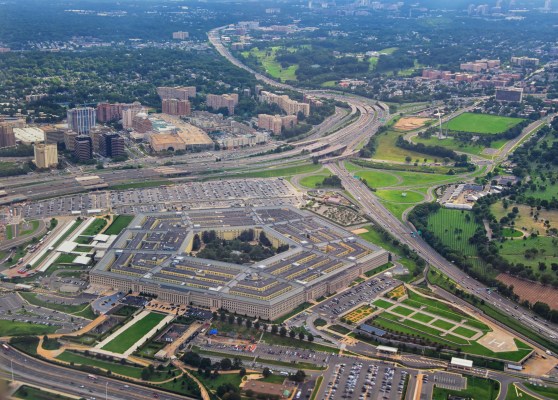The TechCrunch Global Affairs Project examines the increasingly intertwined relationship between the tech sector and global politics.
On November 15, 2021 Russia launched an anti-satellite missile into low-earth orbit without warning, successfully destroying a Russian satellite. Projectile debris from this event not only endangered the astronauts aboard the International Space Station, but also could cause severe damage to satellites that support critical infrastructure here on Earth, such as GPS and power grids, for many years to come.
Just one month prior, China launched a hypersonic missile that circled the Earth and would be impossible to defend against with current technology.
These events are a wake-up call: The United States’ technological leadership is not assured, and the global standards we developed and maintained with our partners and allies are being rewritten, as new technological advancements give rise to new threats to our nation’s security.
But these new threats are not insurmountable. In fact, these events should serve as a clarion call for entrepreneurs and investors at the forefront of emerging technology domains, including artificial intelligence, space, cybersecurity and autonomous systems.
To meet the rising challenges posed by asymmetric and cyber warfare, we need to work together – Pentagon, academia, and industry – as we did more than 60 years ago to build Silicon Valley and our nation’s technological leadership of today. Government investments helped to create the internet and semiconductors, as well as map the human genome.
I came to the Department of Defense after 30 years in the commercial technology sector to help rebuild the ties that underwrote much of our country’s economic strength and global leadership over the past half century.
Why rekindle the DoD-Silicon Valley connection?
The DoD is actively pursuing a technology modernization agenda that not only reflects the changing nature of warfare but also engenders a series of necessary business process reforms. For example, in commercial space, companies are already deploying small satellites to provide more ubiquitous internet access and pioneer rapid launch capability to deliver payloads to various geospatial layers; self-driving cars are providing transportation options; swarming drones are surveilling oil pipelines and inspecting commercial buildings and infrastructure.
These innovations are all dual-use technologies, meaning they have military applications as well. Networking these solutions together is supported by global cloud options that are cost-effective, secure and scalable. Just like companies do, the military needs to harness the insights contained in voluminous data to generate predictive capabilities through AI and machine learning that yield faster and better decision-making.
Business process reforms are equally important to improving our defense posture. Most of the DoD’s business processes were established in the 1960s and focused on building large weapons platforms such as tanks, ships and planes. Rapid advancements in the commercial sector, which promise to enhance our military’s technological edge, mean that the Pentagon now needs to buy many more technologies that complement the large weapons platforms we continue to buy.
It’s clear the coming decade will be one characterized by intense competition among nations for preeminence in technology. For an increasing number of commercial vendors, this will represent an unprecedented opportunity to tackle complex problems together with the Defense Department.
For instance, with assets in air, space, undersea, on land and in cyberspace, the national security apparatus is effectively the largest collection of sensors in the world. To date, however, these sensors are not designed to seamlessly integrate; rather, they are typically built and operated in silos, making it challenging to implement updates and develop a common operating picture. Building an Internet of Things in space—a global sensor network – would provide real-time situational awareness, a resilient communications infrastructure as a backbone for operational decisions— and the basis for an autonomous force of sea, land, air and space systems that are small, numerous and agile.
These systems will generate immense amounts of data requiring increased storage, management and analytics, and technology modernization means building better tools to collect information, analyze it, understand it, and make better decisions in the interest of national security. It will also involve more sophisticated protection from cyber vulnerabilities.The physical manifestation of these new capabilities will require greener energy use.
Commercial companies are developing these technologies today, and the DoD must increase its capacity to quickly assess and efficiently procure these solutions — enhancing our national security and driving commercial prosperity. Executing this vision means more companies than ever before can participate in a once-in-a-generation economic opportunity that likewise enhances national security in the 21st Century.
Defense Innovation Unit: DoD’s startup
To deliver the best technology to our military, then-Defense Secretary Ash Carter recognized the need to break down institutional barriers and inject fresh ideas, technologies, and methodologies from the commercial sector. In 2015, he announced the opening of the Defense Innovation Unit (DIU) to rebuild this connection. DIU was designed to bring innovative and faster contracting mechanisms to bear, making it easier, more desirable and more profitable to do business with the DoD.
At DIU we’ve already seen how powerful this collaboration can be, from providing ongoing investment at key points of hardware and software lifecycles, uninterrupted access to testing facilities, and showing commercial companies a path to linear growth in the defense sector. This collaboration can accelerate a product’s development or stimulate a company’s growth, showing investors access to new markets.
But maintaining U.S. leadership in key technologies requires changing the 60-year-old acquisition system. DoD is no longer the first mover, the primary investor, or market maker for many technologies today. DoD needs to become a fast follower, adapting and integrating commercial technology not developed by the DoD, to solve defense problems. To do this, DIU is advocating action in three areas:
- Solving problems directly with available commercial solutions instead of being bound by defense-specified requirements for custom military solutions
- Streamlining acquisitions, moving at commercial speed, and scaling opportunities
- Building flexibility into the budgeting process, which today takes up to three years to program and spend a dollar for defense needs
These three areas may seem obvious but overcoming long-established processes in defense planning and Congressional approval is not easy. And ensuring we can make the sound business case to technology firms of supporting work in national security is essential since there are large markets to serve outside of defense
Accelerating the pace of change and removing barriers cannot be done solely inside the DoD or with a select few commercial companies participating. We need all sides of the triangle of business, academia and government actively engaged, providing different ideas and approaches to accelerate our pace of modernization. Rebuilding the connection between DoD and commercial industry — from exchanging talent, acquiring products, having open communications on key issues — is critical.
DoD leadership recognizes that we are living through a technological moment unlike any other in our nation’s history. DIU has a unique and important role to play in bringing commercial technology and methodologies to modernize both critical parts of the military’s infrastructure. Together, like we have done in the past with the birth of Silicon Valley, we can ensure a secure and prosperous future for our nation.


